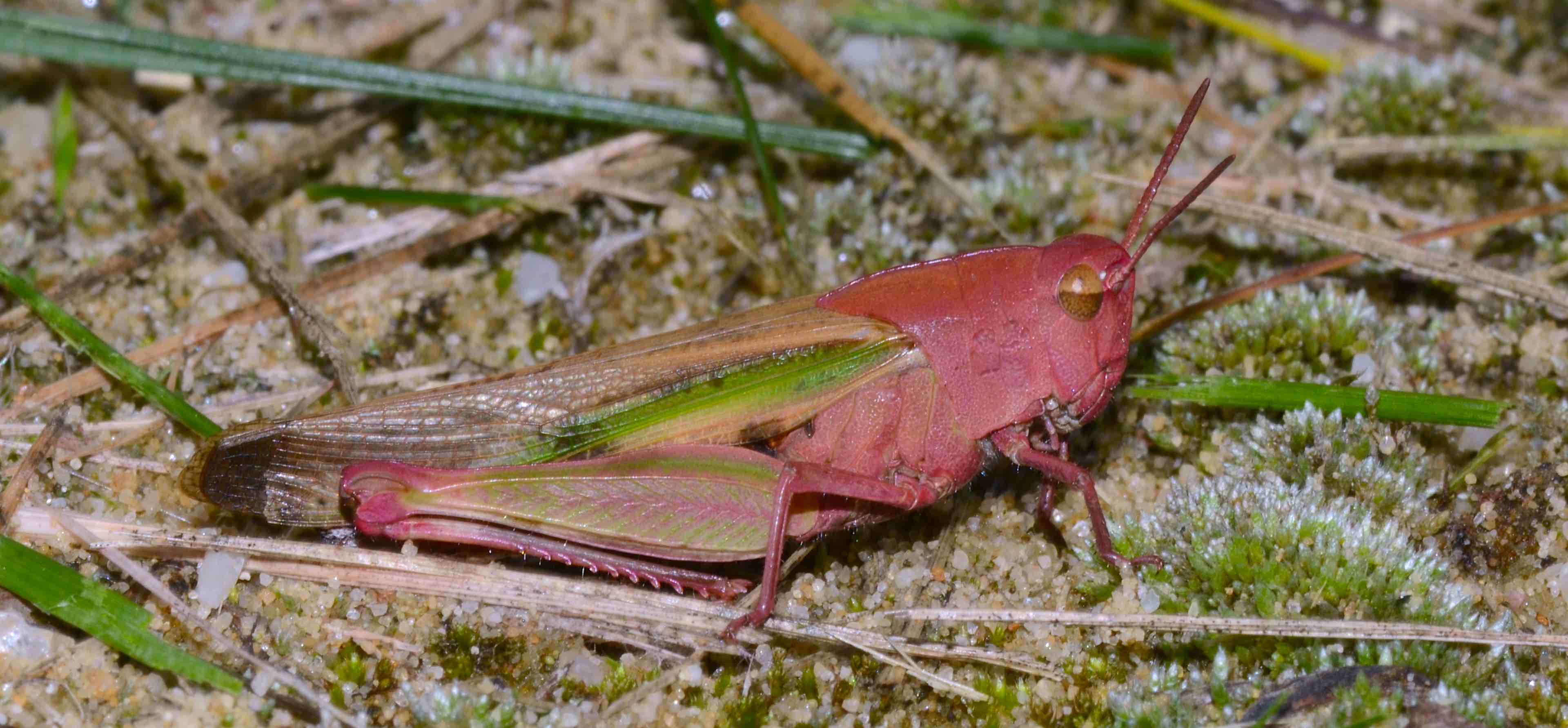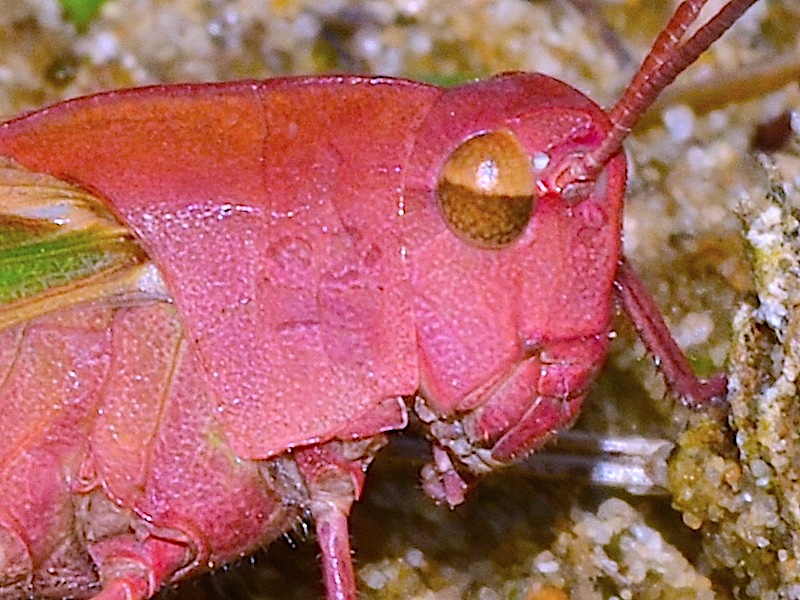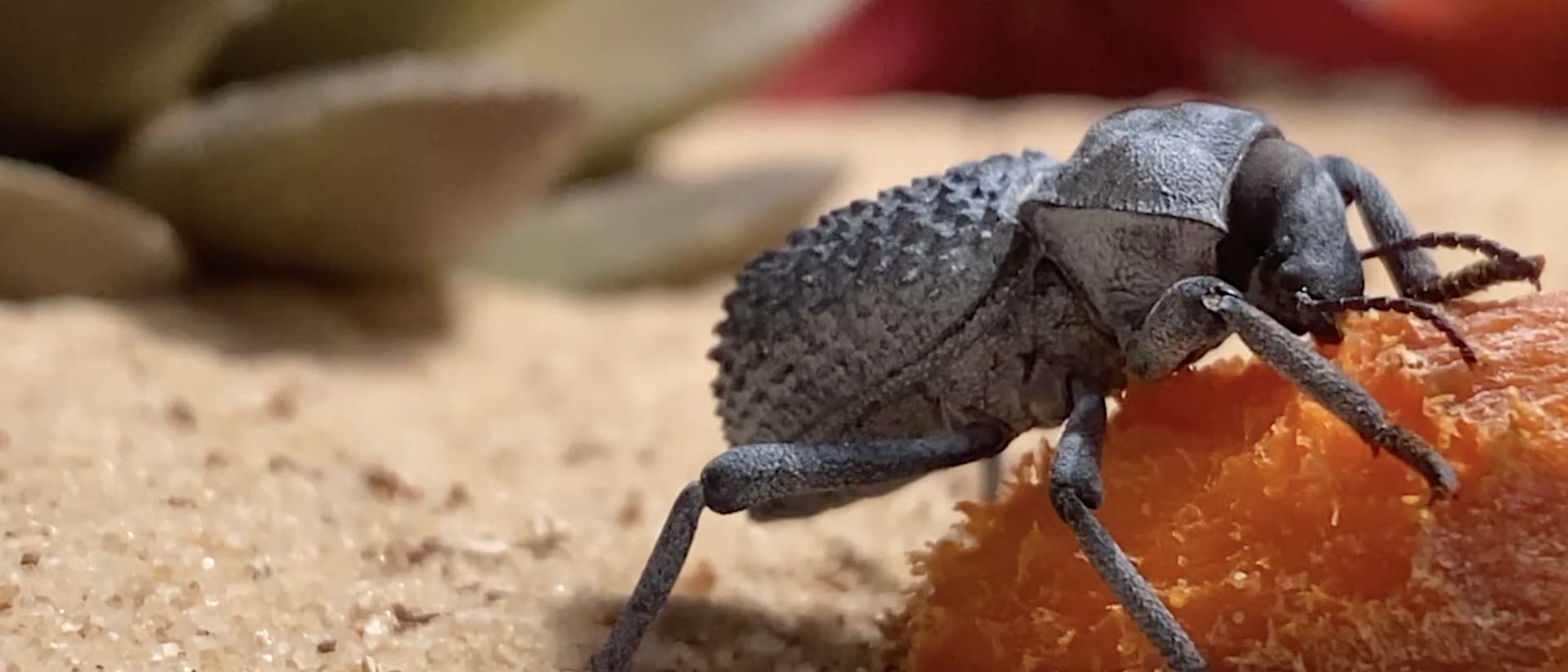Are they really that rare?
A quick search for “pink grasshopper” at the BugGuide.net (an online catalog of north American insects) produces dozens of images for many different species including multiple subspecies of green-striped grasshoppers, slant-faced grasshoppers, round-headed katydids, bird grasshoppers, spur-throat toothpick grasshoppers and many more. So, it seems that while they are strikingly beautiful pink insects, they are not particularly rare.
If we go global, and look at certain orthopteran species, such as the leaf-like katydids from Borneo (Eulophophyllum species), we will discover that all of the females that have ever been collected for those species happen to be pink with green stripes, while the males are uniformly green. For those species, pink coloration may be influenced by genetics, but it is not rare at all! However, one thing that I think is more important to note is that species normally not associated with pinkishness are sometimes pink anyway.
I was surprised to discover that adult locusts (yes, those ones from the bible) are pink at first, and then slowly change color as they mature. So, in that situation, finding a locust with a pink hue definitely is not rare, and if you simply kept it alive for a while longer, it would stop being pink! I hope I will always continue to be excited to find a pink grasshopper or katydid, but I will no longer consider it to be particularly rare.
Are they genetic mutants?
Maybe…I was once gifted an entire book on pygmy grasshopper genetics by a retiring professor. His career was devoted to the biochemistry of how the exoskeleton of insects becomes pigmented and hardened. The book was from 1929. I don’t recall anything about pink grasshoppers in that book!
Now, grasshopper genetics isn’t all that hot of a topic, but I managed to compile an array of sources on grasshopper coat color variants. Suffice to say, none of them address “pink” grasshoppers, but one comes close.
In the migratory grasshopper (Melanoplus sanguinipes), one group found a genetic mutant they called “bloody” which has variable splotches of pink on the face, legs and wings. The pattern was likened to that of the young locusts. The bloody trait appears to be inherited as a single autosomal recessive gene.
If it isn’t genetic, is it environmental?
Maybe. There is clear evidence for two main possibilities: 1) environmental stress, 2) the color of their surroundings.
Stress is a major component of morphological differentiation in locusts. The two main stressors are humidity and crowding. High humidity promotes more greenish forms and low humidity promotes brownish forms of the nymphs. Solitary nymphs develop coloration that helps hide them within their environment and crowding results in gregarious forms that are more pigmented as nymphs, pink when first molted, and become conspicuously yellow over time. While this phenomenon was known in locusts for a long time, similar color morph differences can occur in other grasshopper species in response to crowding, temperature differences or diet.
Grasshoppers reared on different colored substrates or in different colored containers will grow up to partly match their surroundings!


